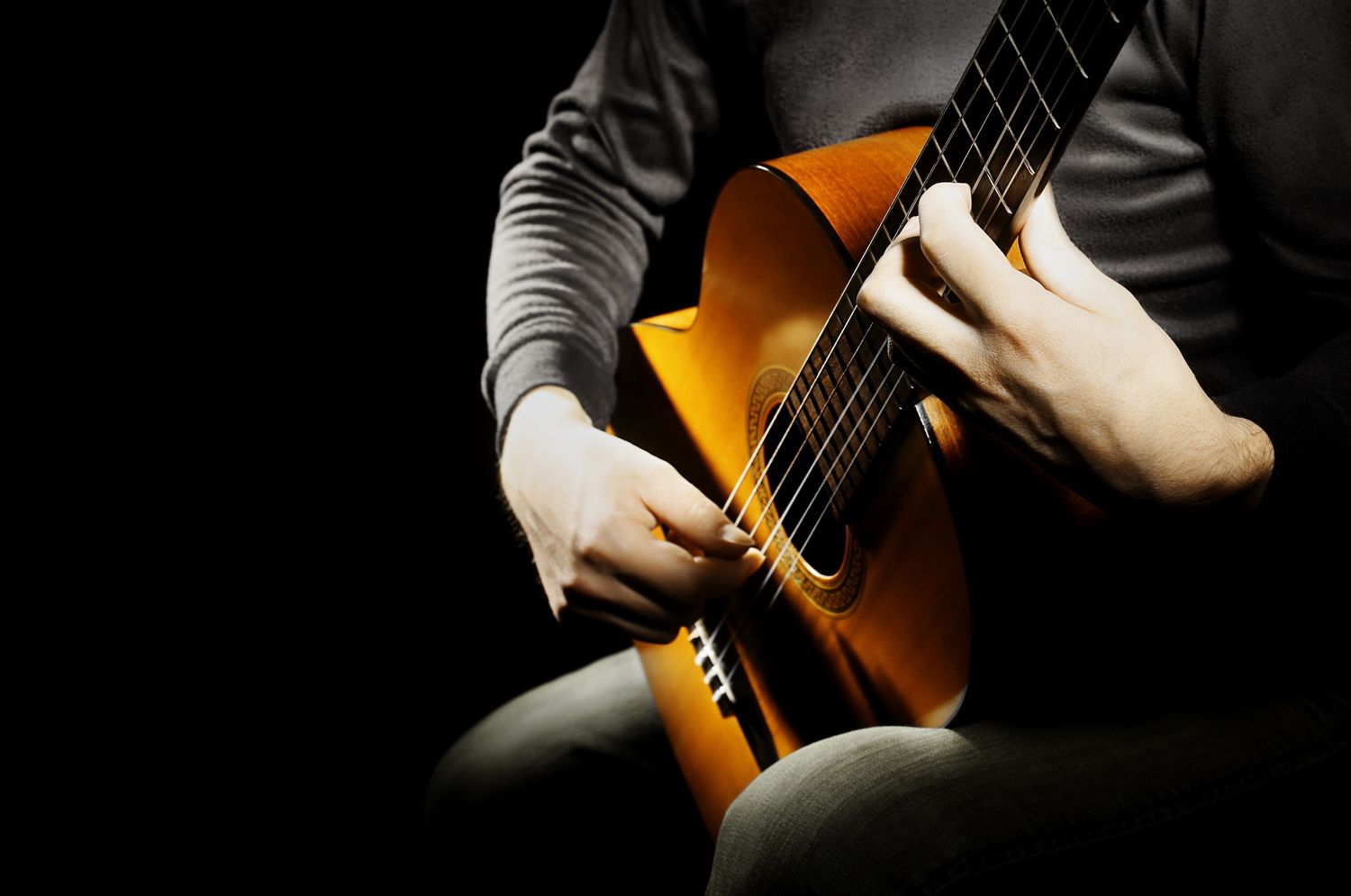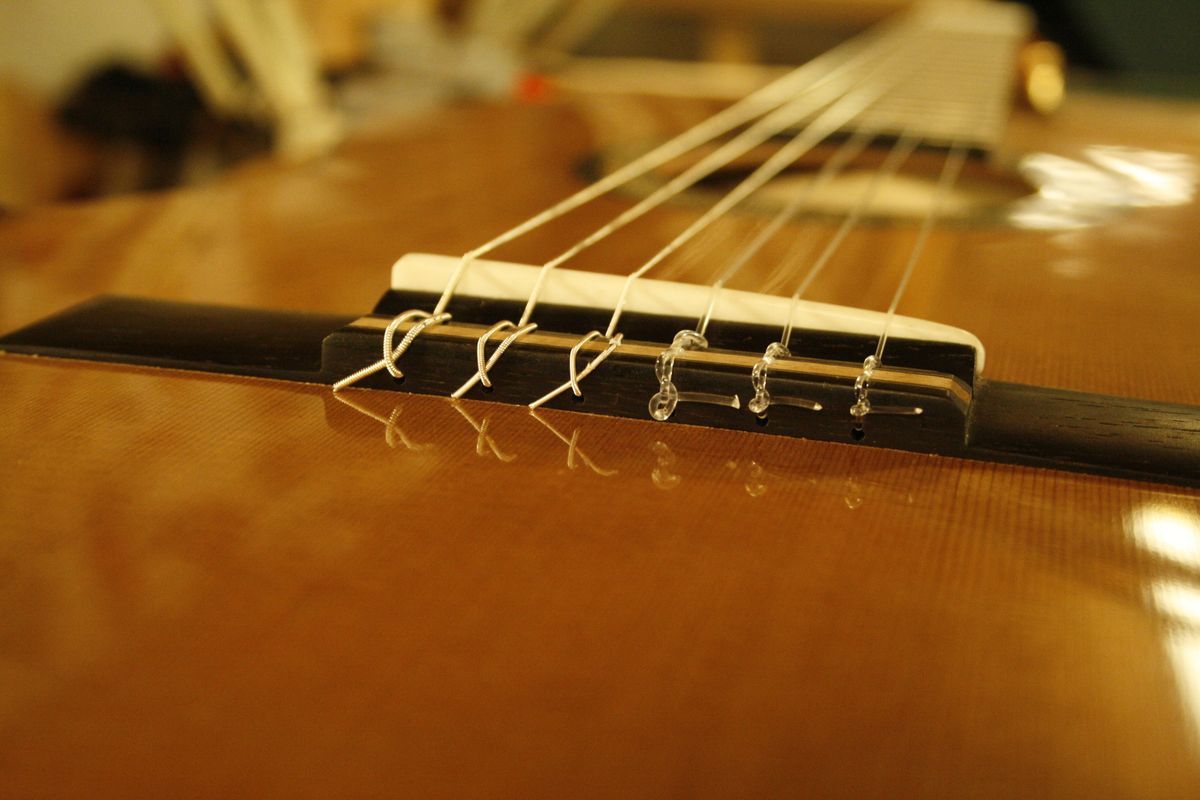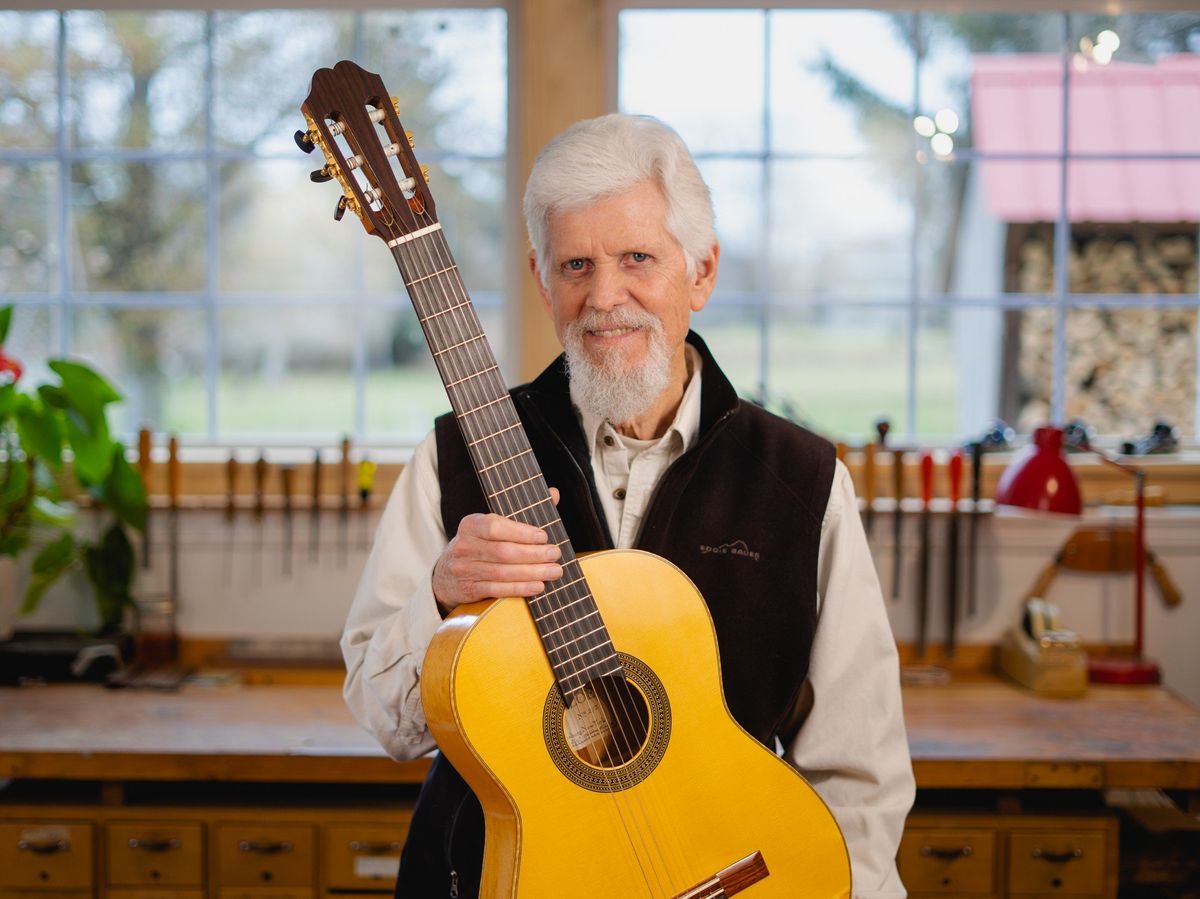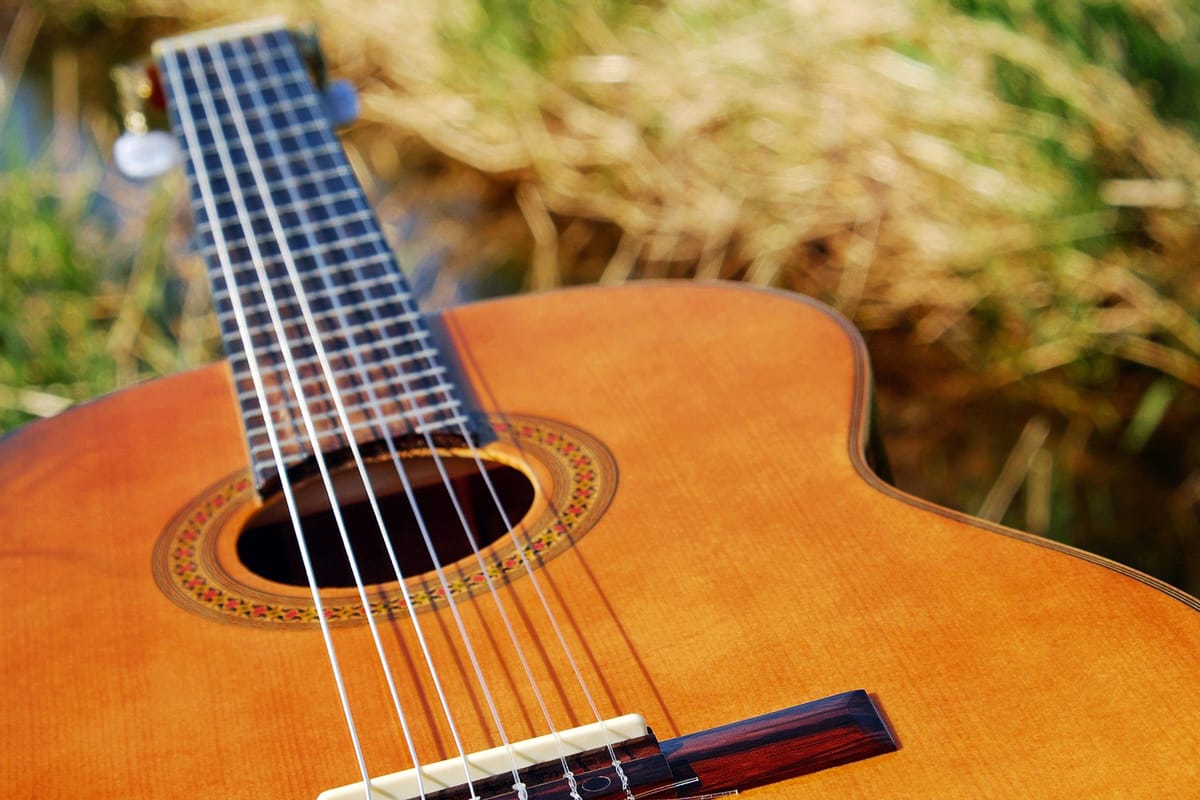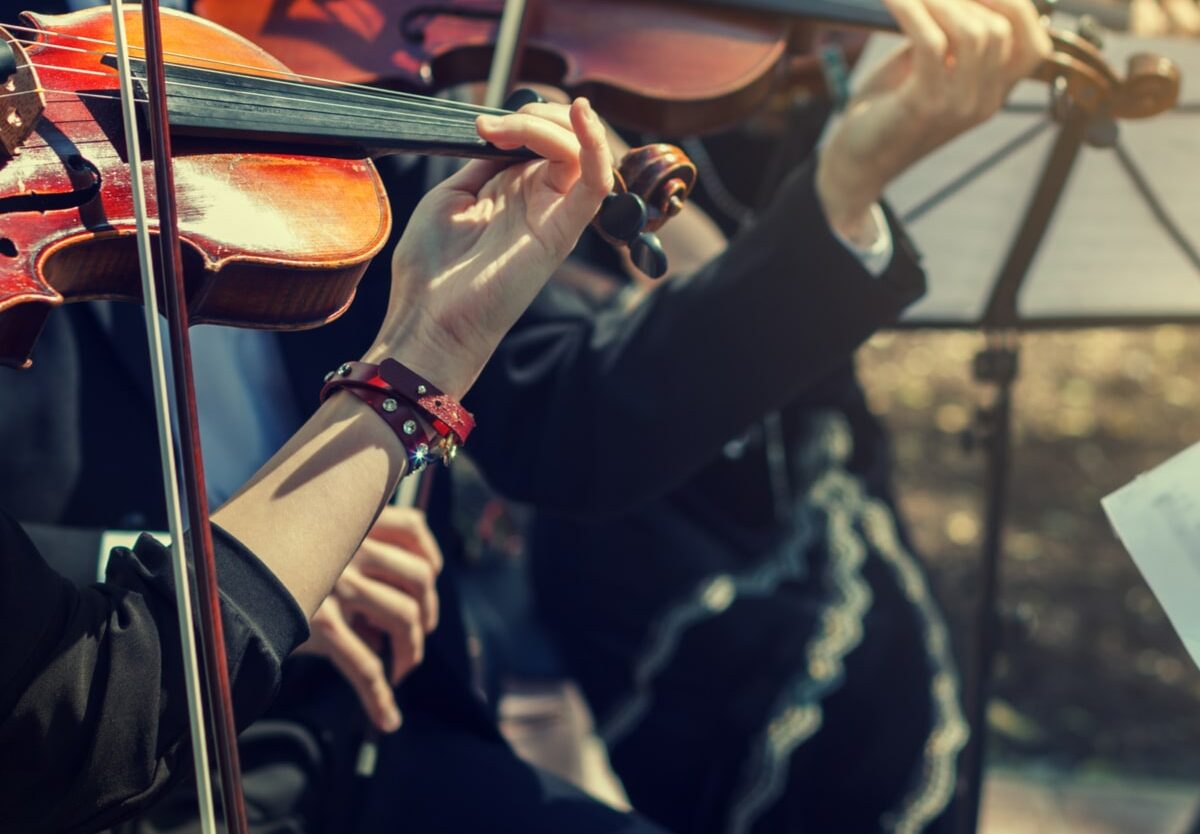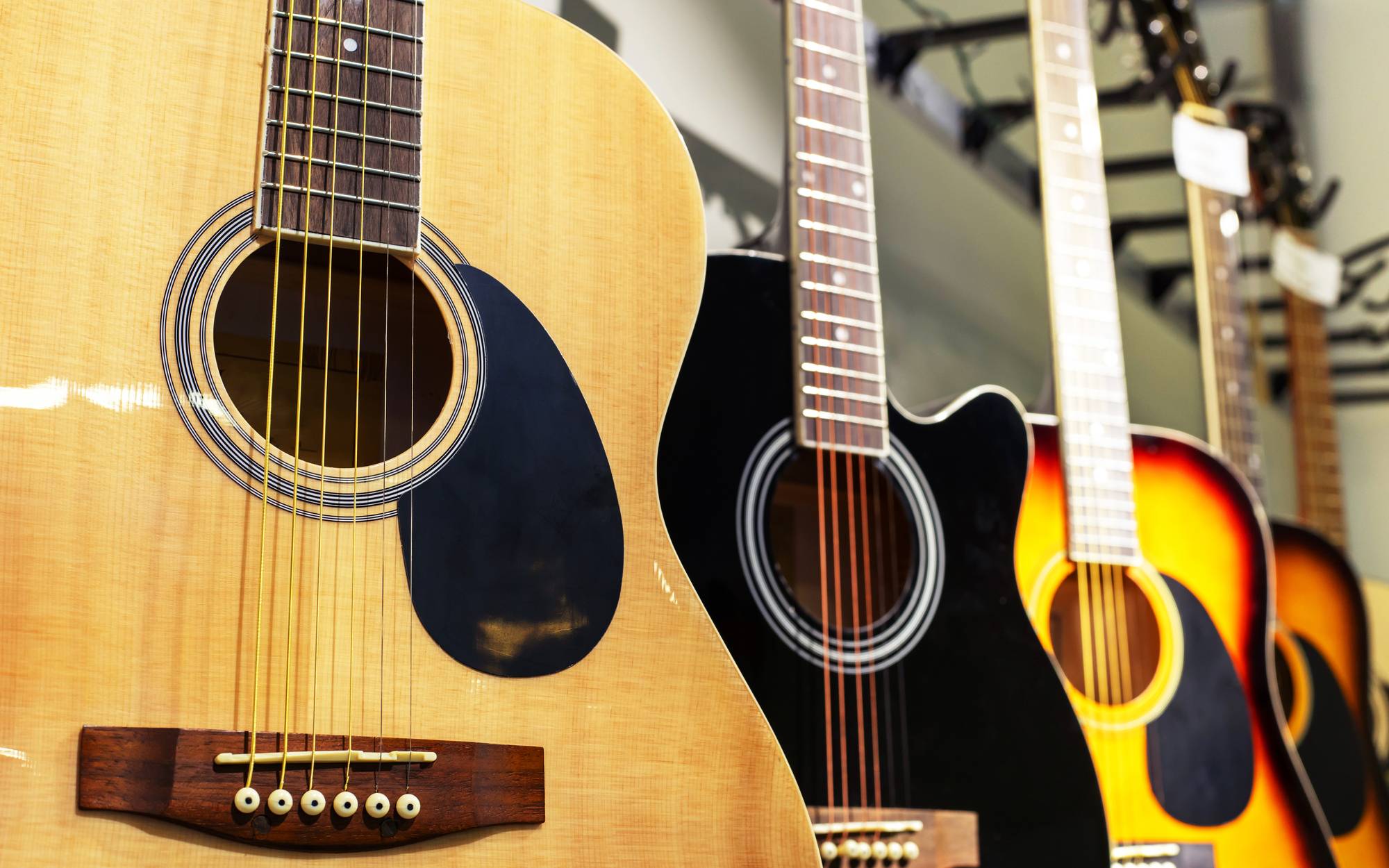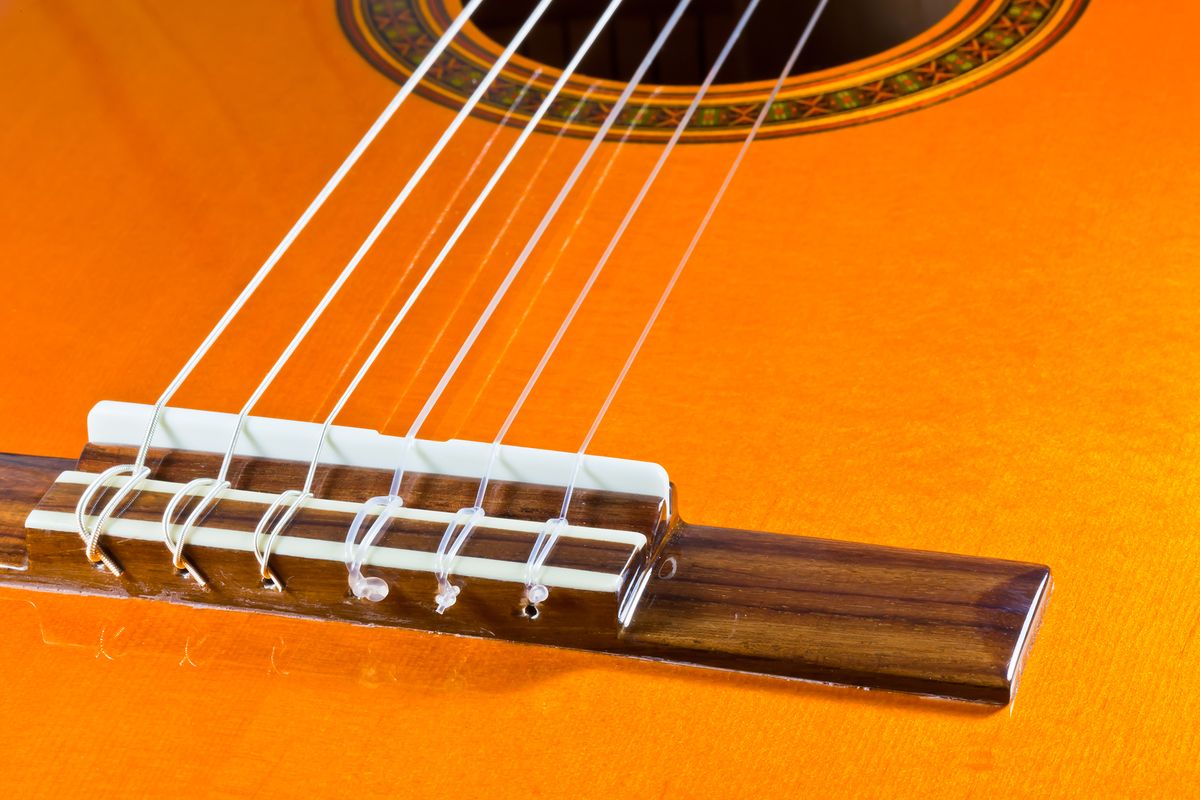

Classical
What Is A Classical Guitar
Modified: January 22, 2024
Discover the beauty and elegance of a classical guitar. Whether you're a beginner or an experienced player, learn about the rich history and timeless sound of this captivating instrument.
(Many of the links in this article redirect to a specific reviewed product. Your purchase of these products through affiliate links helps to generate commission for AudioLover.com, at no extra cost. Learn more)
Table of Contents
Introduction
The classical guitar is a timeless instrument with a rich history and a unique sound. It is often associated with the beautiful melodies and intricate harmonies of classical music, but its versatility allows it to be used in a wide range of genres and styles. Whether you are a music enthusiast, a guitar player, or just curious about this fascinating instrument, this article will provide you with a comprehensive guide to understanding what a classical guitar is, its history, its anatomy, and much more.
Traditionally made of wood, the classical guitar has a distinctive shape that sets it apart from other types of guitars. Its intricate construction and delicate craftsmanship contribute to its exceptional sound quality and playability. Many renowned musicians have dedicated their careers to mastering the classical guitar, and their contributions have shaped the development of this instrument over the years.
In this article, we will dive into the world of classical guitars, exploring their history, anatomy, sound characteristics, playing techniques, repertoire, and notable classical guitarists. By the end of this article, you will have a deeper understanding and appreciation for the classical guitar and its important role in the world of music.
Definition of a Classical Guitar
A classical guitar, also known as a Spanish guitar or nylon-string guitar, is a stringed musical instrument from the guitar family. It is characterized by its specific construction, materials, and playing technique. Unlike other types of guitars, such as acoustic or electric guitars, the classical guitar has a unique sound that is renowned for its warmth, richness, and clarity.
One of the defining features of a classical guitar is its use of nylon strings. These strings produce a mellower and softer tone compared to the steel strings used in other types of guitars. The nylon strings are typically made from a combination of nylon and other materials, such as nylon cores wrapped with silver or copper wire. The use of nylon strings not only affects the sound of the guitar but also influences the playing technique and the way the instrument is constructed.
Another characteristic of a classical guitar is its construction. The body of a classical guitar is typically made of wood, with the most common choices being cedar, spruce, or mahogany. The top or soundboard of the guitar is usually made of a solid piece of wood, which contributes to the resonant and expressive sound of the instrument. The sides and back of the guitar are often made of different types of wood, which can vary depending on the builder’s preference and the desired tonal qualities.
Visually, a classical guitar is distinct in its design. It features a wide, flat neck with a wide fingerboard, allowing for precise finger placement and intricate note articulation. The neck typically joins the body at the 12th fret, providing a balanced and comfortable playing experience. Classical guitars also have a unique headstock design, often featuring slotted tuners, which add to their aesthetic appeal.
In terms of size, classical guitars come in various sizes, from full-size instruments to smaller-scale models designed for younger or smaller-handed players. The standard full-size classical guitar has a scale length of around 25.6 inches (650mm) and typically has six strings, although models with seven or even ten strings can also be found.
Overall, the classical guitar is a beautiful and versatile instrument that has captivated musicians and audiences for centuries. Its distinctive sound and its unique construction make it an essential part of classical music, as well as a favored choice for musicians in a wide range of musical genres.
History of Classical Guitars
The history of the classical guitar can be traced back centuries, with its roots deeply intertwined with the development of stringed instruments in ancient civilizations. The evolution of the classical guitar as we know it today is a fascinating journey through time, influenced by cultural exchanges, technological advancements, and the creative genius of musicians and instrument makers.
Early versions of stringed instruments similar to the guitar can be found in ancient civilizations such as Egypt, Mesopotamia, and Greece. These primitive instruments consisted of a resonating body and strings that were plucked or strummed to produce sound. Over time, various iterations of the guitar emerged, with notable advancements occurring during the Renaissance and Baroque periods.
During the Renaissance (14th to 17th centuries), the guitar underwent significant developments in Europe. It evolved from a small, four-course instrument to a larger, five-course instrument, with each course consisting of two strings. The addition of the fifth course allowed for a wider range of notes and greater versatility in musical compositions.
As the Baroque period (17th to 18th centuries) dawned, the six-string guitar, similar to the modern classical guitar, emerged. It gained popularity as a solo instrument and became an integral part of chamber music ensembles. Musicians and composers of the time, such as Gaspar Sanz, Robert de Visée, and Francesco Corbetta, contributed to the growing repertoire and technical advancements of the classical guitar.
In the 19th century, notable guitarists and instrument makers, including René Lacôte and Antonio de Torres, played a crucial role in shaping the modern classical guitar. These innovators experimented with new materials, refined the instrument’s construction, and incorporated features such as fan bracing and a larger body size for improved volume and projection.
The 20th century witnessed the continued development of the classical guitar, with players like Andrés Segovia elevating its status as a solo instrument. Segovia’s dedication to promoting the classical guitar and commissioning works from renowned composers such as Manuel Ponce and Heitor Villa-Lobos helped establish the guitar as a serious instrument in the world of classical music.
In recent decades, advancements in technology and construction techniques have further expanded the possibilities for classical guitarists. Innovative designs, such as double-top and lattice bracing, have enhanced the instrument’s tonal possibilities and responsiveness. This, combined with the exploration of new playing techniques and musical styles, has ensured the continued relevance and popularity of the classical guitar in the modern era.
Today, the classical guitar continues to captivate audiences with its melodic beauty, expressive capabilities, and versatility. It has evolved from humble beginnings to become a respected and cherished instrument that bridges the gap between tradition and innovation, and its rich historical journey continues to inspire musicians and listeners alike.
Anatomy of a Classical Guitar
To fully understand and appreciate the classical guitar, it is essential to familiarize yourself with its various components and their functions. The anatomy of a classical guitar consists of the body, soundboard, neck, fingerboard, headstock, and other smaller elements that work together to create its unique sound and playability.
The body of a classical guitar is typically made of wood, chosen for its tonal qualities. Common woods used for the top (soundboard) include cedar, spruce, and occasionally, redwood. The sides and back of the guitar are usually made of different types of wood, such as rosewood, mahogany, or maple. The combination of these woods affects the guitar’s overall sound, responsiveness, and projection.
The soundboard, also known as the top, is one of the most critical components of a classical guitar. It resonates when the strings are plucked, amplifying the sound and shaping the instrument’s tonal characteristics. The soundboard’s construction often includes bracing, which consists of wooden strips arranged in a specific pattern. The bracing reinforces the soundboard and influences its vibrational response, contributing to the guitar’s unique tone.
The neck of a classical guitar is a long, thin piece of wood that extends from the body. It connects to the guitar’s body at the 12th fret, creating a stable and balanced instrument. The neck is typically made of hardwood, such as mahogany or maple, and is designed to be both sturdy and comfortable to hold. It features a truss rod for adjusting the neck’s curvature to achieve optimal playability.
Attached to the neck is the fingerboard, which is typically made of dense and durable wood such as rosewood or ebony. The fingerboard is where the player presses down on the strings to produce different notes and chords. It is divided into many small metal strips called frets, which mark the precise locations for each note. The height and curvature of the frets affect the instrument’s playability and intonation.
Located at the end of the neck is the headstock, which holds the tuning pegs or machine heads. Classical guitar headstocks often feature slotted tuners, which require the player to insert the strings into the slots and wrap them around the pegs to secure them. The headstock’s design may vary, with some guitars featuring intricate inlays or decorations for aesthetic purposes.
Other smaller components of a classical guitar include the nut, bridge, and saddle. The nut is a small piece of bone or synthetic material located at the top of the fingerboard. It supports the strings and helps maintain their spacing and alignment. The bridge, located on the body of the guitar, holds the strings in place and transmits their vibrations to the soundboard. The saddle, often made of bone or synthetic materials, sits on the bridge and helps to maintain proper string height and intonation.
Understanding the anatomy of a classical guitar provides insight into how each component contributes to the instrument’s overall sound and playability. From the choice of wood to the design and construction techniques, every element plays a crucial role in creating the expressive and beautiful tones that define the classical guitar.
Sound Characteristics of a Classical Guitar
The sound characteristics of a classical guitar are what make it a distinct and beloved instrument in the world of music. Known for its warm, rich, and expressive tones, the classical guitar possesses a unique sonic quality that sets it apart from other types of guitars.
One of the defining elements of the classical guitar’s sound is its use of nylon strings. Compared to the steel strings commonly found on acoustic and electric guitars, nylon strings produce a mellower and softer tone. The nylon strings create a more subdued attack and sustain, allowing for a broader dynamic range and smoother transitions between notes.
The combination of the nylon strings and the construction of the guitar’s body contributes to its characteristic sound. The top or soundboard, typically made of solid wood such as cedar or spruce, resonates with the vibrations of the strings, producing a warm and vibrant tone. The soundboard acts as a natural amplifier, enhancing the volume and projection of the instrument’s sound.
Classical guitars often exhibit a balanced tonal response across the frequency spectrum. They have a rich bass response that is deep and resonant, providing a solid foundation to musical pieces. The midrange is warm and full, allowing for clarity and articulation in melodies and chords. The treble notes are clear and bell-like, adding brilliance and sparkle to the overall sound.
Furthermore, the body shape and size of a classical guitar contribute to its sound characteristics. Classical guitars typically have a larger body compared to acoustic guitars, which provides more resonant air volume. This larger body enhances the guitar’s bass response and overall volume, giving it a fuller and more vibrant sound.
The playing technique employed on a classical guitar also influences its sound. Due to the nylon strings, classical guitar players often use fingerstyle techniques, plucking the strings with their fingertips or nails. This playing style allows for greater control and nuance in producing different tones and expressions. Additionally, techniques such as vibrato, harmonics, and chord voicings enhance the classical guitar’s versatility and depth of sound.
Overall, the sound characteristics of a classical guitar can be described as warm, rich, expressive, and balanced. Its mellow and romantic tones lend themselves well to a wide variety of musical genres, including classical, flamenco, jazz, and folk music. The classical guitar’s unique sound has captivated audiences and inspired countless musicians throughout history, making it an instrument of timeless beauty and musicality.
Playing Technique for Classical Guitar
The classical guitar has a distinct playing technique that sets it apart from other types of guitars. The combination of its nylon strings, precise finger placement, and delicate touch allows for a wide range of expressive possibilities. Whether you are new to playing the classical guitar or looking to refine your technique, understanding the fundamental principles will help you achieve beautiful and nuanced performances.
One of the primary techniques in classical guitar playing is fingerstyle. Unlike strumming with a pick, classical guitarists use their fingertips or nails to pluck the strings. This technique provides greater control over the dynamics, tone, and articulation of each note.
When playing fingerstyle, it is essential to position your hand correctly. The right-hand position involves resting the palm of your hand on the bridge or soundboard of the guitar, with your fingers extending over the strings. The thumb is generally used to pluck the lower three strings (bass strings), while the index, middle, and ring fingers are responsible for plucking the higher three strings (treble strings).
The left-hand technique involves precise finger placement on the fingerboard to produce specific notes and chords. Proper hand and finger positioning are crucial for accurate and efficient playing. The fingers should be curved, lightly touching the strings to avoid unwanted buzzing or muting.
One of the hallmarks of classical guitar playing is the emphasis on producing a clean and clear sound. To achieve this, classical guitarists often work on developing an even and controlled tone across all the strings. Paying attention to the angle and pressure of your fingertips and nails when plucking the strings can greatly impact the sound quality.
Articulation techniques, such as legato and staccato, play a significant role in classical guitar playing. Legato refers to smooth and connected notes, achieved by coordinating the release of one finger while the next finger is preparing to press the next note. Staccato, on the other hand, involves producing short and disconnected notes by swiftly releasing pressure on the string after plucking it.
Additionally, classical guitarists often employ various ornamentation techniques to add musical embellishments to their performances. These include trills, mordents, grace notes, and slides, among others. Mastering these techniques adds intricacy and sophistication to the music.
Learning to read sheet music is highly recommended for classical guitarists. Sheet music provides a written representation of the music, including musical notation, dynamics, and other crucial information. Developing strong sight-reading skills allows you to explore a vast repertoire of classical guitar music and opens doors to collaborations and ensemble playing.
Lastly, regular practice and patience are vital to improving your playing technique. Developing strong finger strength, dexterity, and muscle memory takes time and dedication. Break down challenging pieces into smaller sections and practice them slowly, gradually increasing speed and accuracy.
By mastering the proper fingerstyle technique, hand positioning, articulation, and ornamentation, you will be able to unlock the full expressive potential of the classical guitar. With dedication and practice, you will develop a distinctive musical voice and bring out the beauty of this extraordinary instrument.
Repertoire for Classical Guitar
The repertoire for classical guitar encompasses a vast array of musical compositions from various time periods, genres, and cultural influences. From the rich and intricate compositions of the Renaissance and Baroque eras to the innovative works of contemporary composers, there is a plethora of music available for classical guitarists to explore and perform.
The Renaissance period (14th to 17th centuries) saw the emergence of groundbreaking composers such as John Dowland, Luis de Narváez, and Francesco da Milano. Their compositions, in the form of intricate lute music, have been widely adapted for the classical guitar. Pieces like Dowland’s “Lachrimae Pavane” and Narváez’s “Variations on ‘Guárdame las vacas'” showcase the beauty and complexity of the Renaissance repertoire.
The Baroque era (17th to 18th centuries) brought forth masterpieces by composers such as Johann Sebastian Bach and Antonio Vivaldi. Bach’s solo lute works, including the influential “Suite in E Minor” and “Prelude, Fugue, and Allegro”, have been popularized on the classical guitar, displaying the instrument’s expressive capabilities. Vivaldi’s concertos, transcribed for solo guitar, showcase virtuosity and charm.
Classical guitar repertoire also includes works from the Romantic period (19th century) by composers like Francisco Tárrega, Fernando Sor, and Mauro Giuliani. Tárrega’s “Recuerdos de la Alhambra” and Sor’s studies for classical guitar are iconic pieces that demonstrate the emotive and technical aspects of the guitar. Giuliani’s concertos and sonatas demonstrate the guitar’s versatility as a solo instrument.
The 20th century brought a wave of innovation to classical guitar music as composers explored new tonalities, techniques, and forms. Heitor Villa-Lobos, a Brazilian composer, revolutionized the guitar repertoire with compositions such as his “Etudes” and the iconic “Prelude No. 1 in E Minor”. Other notable composers of this period include Isaac Albéniz, Manuel Ponce, and Leo Brouwer, whose works showcase rich harmonies and rhythmic intricacies.
Contemporary classical guitar repertoire is characterized by the exploration of new sounds and extended techniques. Composers like Roland Dyens, Sergio Assad, and Nikita Koshkin have contributed innovative and challenging works that push the boundaries of the instrument. Additionally, many classical guitarists embrace arrangements of popular music, jazz standards, and world music, expanding the repertoire even further.
When exploring the repertoire, it is important to consider the level of difficulty and suitability to your playing ability. Beginners may start with simple folk tunes and traditional pieces before progressing to more advanced compositions. A well-rounded repertoire should include works from different time periods, styles, and composers, allowing for a diverse and fulfilling musical experience.
Classical guitarists have the opportunity to immerse themselves in a vast and diverse selection of music. From the delicate and intricate compositions of the Renaissance and Baroque eras to the innovative works of contemporary composers, the repertoire for classical guitar offers endless possibilities for exploration, interpretation, and artistic expression.
Notable Classical Guitarists
Throughout history, there have been exceptional classical guitarists who have not only mastered the instrument but also made significant contributions to its development and popularity. These virtuosos have captivated audiences with their technical prowess, musical interpretation, and dedication to advancing the art of classical guitar playing. Here are just a few of the notable classical guitarists who have left a lasting impact:
Andrés Segovia (1893-1987) – Often referred to as the “father of the modern classical guitar,” Segovia played a crucial role in elevating the guitar’s status as a concert instrument. His meticulous technique, exquisite tone, and profound musical interpretations helped establish the classical guitar as a respected instrument in the world of classical music.
Julian Bream (1933-2020) – Bream was a British guitarist known for his exceptional performances and commitment to expanding the classical guitar repertoire. He collaborated with renowned composers such as Benjamin Britten and Leo Brouwer, and his interpretations of Baroque and Renaissance music were particularly admired.
John Williams (b. 1941) – Recognized as one of the most accomplished and versatile classical guitarists, Williams has explored a wide range of musical genres, including classical, Spanish, and contemporary music. With his technical brilliance and expressive playing, he has played a significant role in popularizing the classical guitar to a broad international audience.
David Russell (b. 1953) – Russell is globally revered for his flawless technique, expressive playing, and innate musicality. His interpretations of classical guitar repertoire, particularly the works of Francisco Tárrega, have garnered critical acclaim, earning him numerous awards and recognition.
Paco de Lucía (1947-2014) – Although primarily known as a flamenco guitarist, Paco de Lucía’s contributions to the classical guitar world cannot be overlooked. His virtuosity, innovative compositions, and fusion of flamenco and classical styles have propelled the classical guitar into new realms of creativity and popularity.
Sharon Isbin (b. 1956) – As one of the foremost female classical guitarists of our time, Isbin has achieved remarkable success both as a performer and educator. Her meticulous technique and diverse repertoire have earned her multiple Grammy Awards and established her as a prominent figure in the classical guitar world.
These are just a few examples of the many extraordinary classical guitarists who have left an indelible mark on the instrument’s history. From their groundbreaking performances and recordings to their dedication to teaching and nurturing new generations of guitarists, these musicians have helped shape the classical guitar into the revered and beloved instrument it is today.
Conclusion
The classical guitar is a captivating instrument with a rich history, unique sound characteristics, and a diverse repertoire. From its origins in ancient civilizations to its prominence in the Renaissance, Baroque, and beyond, the classical guitar has evolved over centuries, driven by the creativity and dedication of musicians and instrument makers.
We explored the definition and anatomy of a classical guitar, delving into its distinct features such as nylon strings, resonant body, and precise fingerstyle technique. We also discovered the captivating sound characteristics of the instrument, renowned for its warmth, richness, and balanced tonal response.
Understanding the playing technique for classical guitar is essential for aspiring musicians. From proper hand positioning and fingerstyle technique to mastering articulation and ornamentation, these skills allow guitarists to unlock the instrument’s full expressive potential.
The repertoire for classical guitar spans a wide range of musical periods and styles. From the intricate works of Renaissance and Baroque composers to the innovative creations of contemporary artists, the classical guitar repertoire offers endless opportunities for exploration and artistic expression.
Lastly, we explored the significant contributions of notable classical guitarists who have shaped the instrument’s history and elevated its status as a concert instrument. From Andrés Segovia to Paco de Lucía, the legacy of these virtuosos continues to inspire and influence guitarists worldwide.
Whether you are a seasoned guitarist, a budding musician, or simply a lover of music, the classical guitar offers a world of beauty, complexity, and artistry to explore. Its unique sound, rich history, and versatile repertoire make it a truly remarkable instrument that continues to captivate and inspire generations.
So pick up a classical guitar, embrace its timeless elegance, and embark on a musical journey that will fill your life with the enchanting sounds of this extraordinary instrument.



